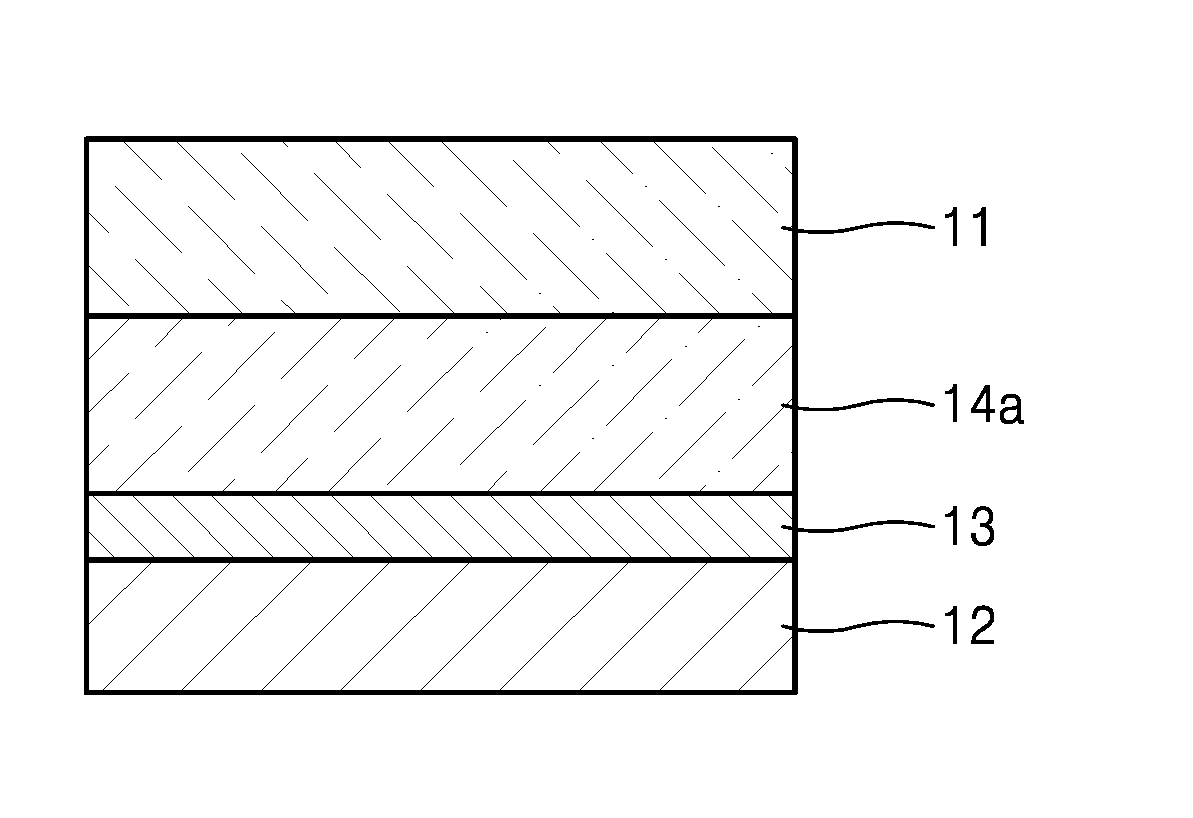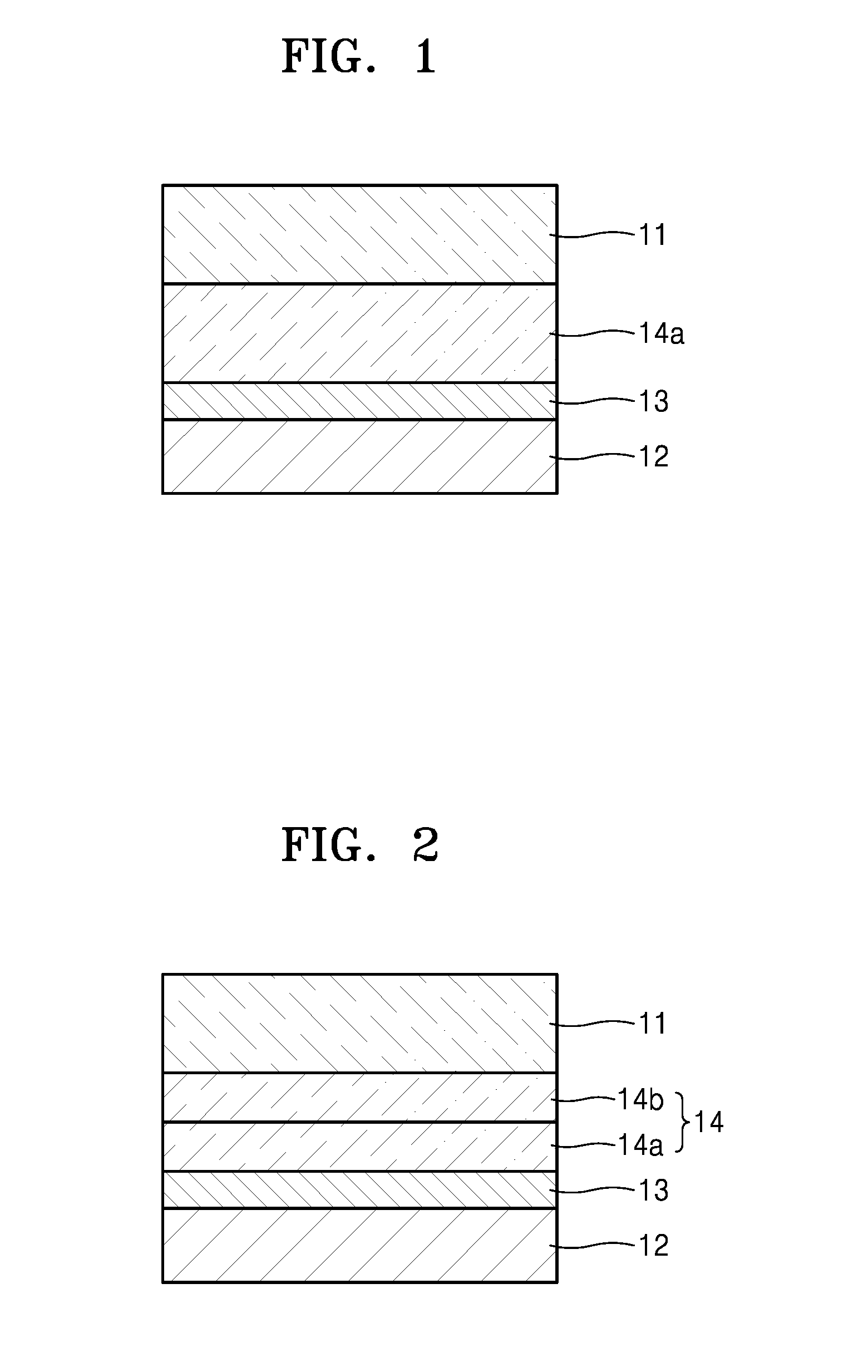Negative electrode for lithium metal battery and lithium metal battery including the same
a technology of lithium metal battery and negative electrode, which is applied in the direction of batteries, sustainable manufacturing/processing, cell components, etc., can solve the problems of dendrite formation on the surface of lithium electrode, and the cycle characteristics and stability of lithium secondary batteries including such a lithium electrode may be reduced, so as to improve the mechanical properties improve the cycle characteristics of lithium metal batteries, and suppress the growth of dendrites
- Summary
- Abstract
- Description
- Claims
- Application Information
AI Technical Summary
Benefits of technology
Problems solved by technology
Method used
Image
Examples
example 1
Preparation of Negative Electrode
[0203]10 grams (g) of polyvinyl alcohol (having a weight average molecular weight of 93.5×103 Daltons (Da), a saponification degree of about 99 mole percent (mol %), and a polymerization degree of 1,700) was dissolved in 10 g of acrylonitrile and 100 milliliters (ml) of dimethylsulfoxide (DMSO) in a reaction flask under a nitrogen gas atmosphere. 0.01 g of potassium persulfate was then added thereto, and a stirring process was performed at about 60° C. for 5 hours to carry out a graft reaction of polyvinyl alcohol and acrylonitrile.
[0204]After completion of the reaction, the acrylonitrile remaining non-reacted was separated from the reaction product by dissolving it with dimethylformamide several times, followed by adding water and dimethylformamide to obtain a precipitate and purifying the precipitate. The resulting product was dried at 40° C. for 34 hours to obtain a polyvinyl alcohol acrylonitrile graft copolymer. The amount of acrylonitrile in th...
example 2
Preparation of Negative Electrode
[0207]A negative electrode was prepared in the same manner as in Example 1, except that the protection film forming composition was diluted about 10-fold and the protection film had a thickness of about 1 μm.
example 3
Preparation of Negative Electrode
[0208]A negative electrode was prepared in the same manner as in Example 1, except that a PVA-g-AN copolymer blend solution obtained as described below, instead of the PVA-g-AN copolymer solution, was used.
[0209]The PVA-g-AN copolymer blend solution was obtained by mixing a PVA-g-AN copolymer and polyacrylonitrile (having a weight average molecular weight of 150×103 Da) in a weight ratio of about 9:1, dissolving 0.3 g of the mixture in 5.7 ml of DMSO, and stirring the resulting mixture at about 90° C. for about 2 hours.
PUM
| Property | Measurement | Unit |
|---|---|---|
| elongation | aaaaa | aaaaa |
| weight average molecular weight | aaaaa | aaaaa |
| glass transition temperature | aaaaa | aaaaa |
Abstract
Description
Claims
Application Information
 Login to View More
Login to View More - R&D
- Intellectual Property
- Life Sciences
- Materials
- Tech Scout
- Unparalleled Data Quality
- Higher Quality Content
- 60% Fewer Hallucinations
Browse by: Latest US Patents, China's latest patents, Technical Efficacy Thesaurus, Application Domain, Technology Topic, Popular Technical Reports.
© 2025 PatSnap. All rights reserved.Legal|Privacy policy|Modern Slavery Act Transparency Statement|Sitemap|About US| Contact US: help@patsnap.com



